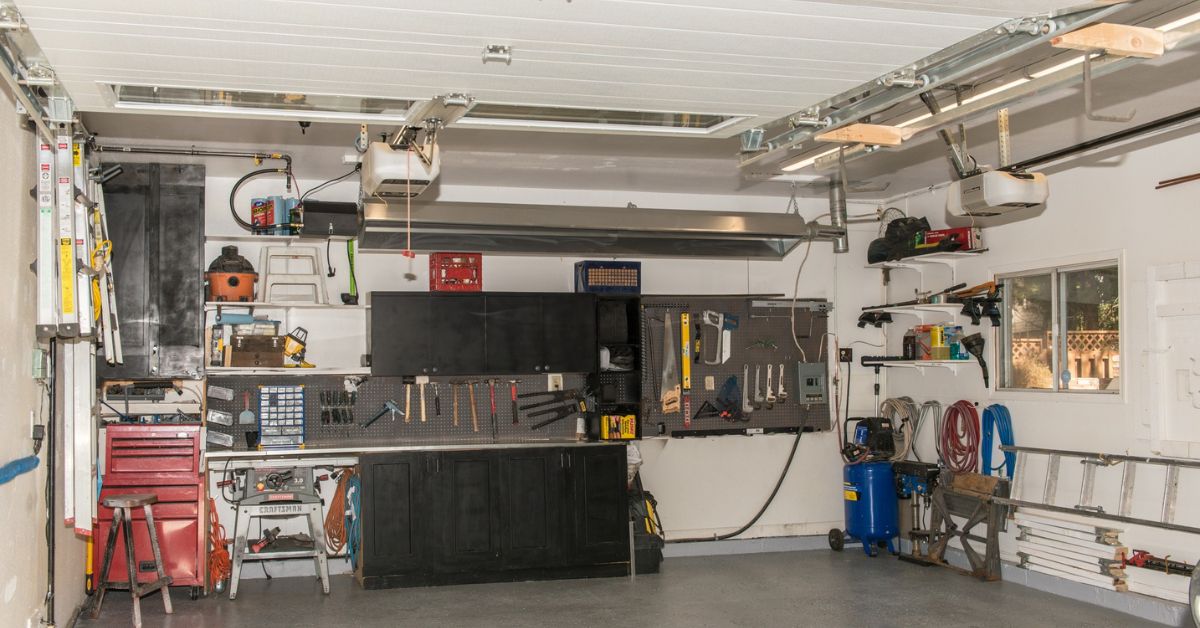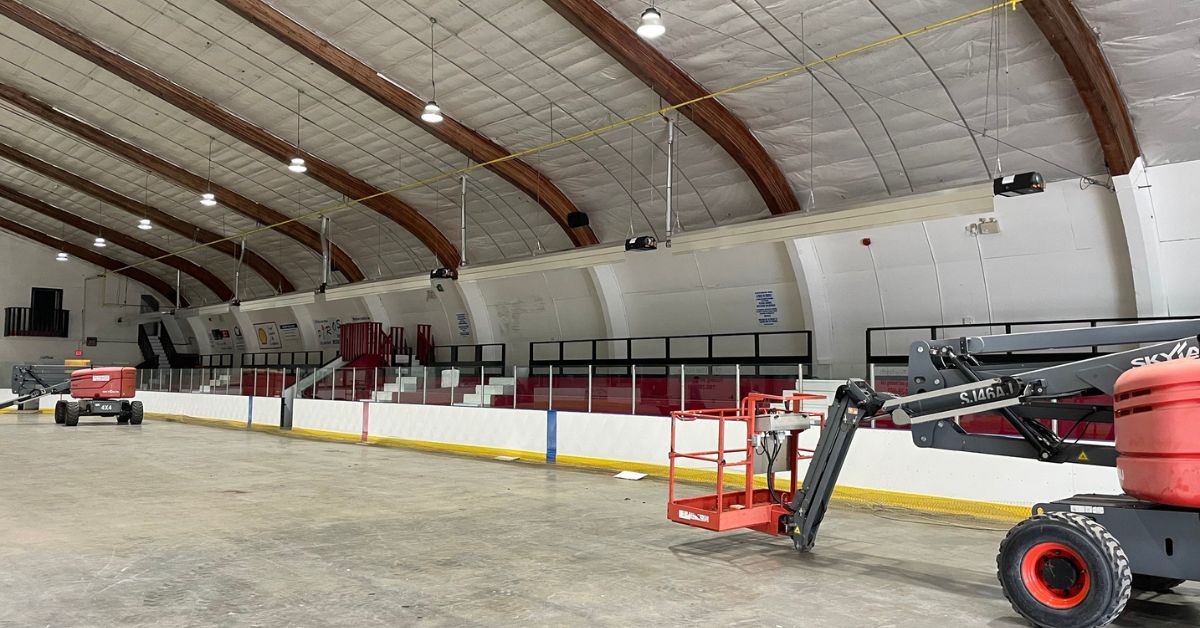Your garage needs proper insulation and heating solutions to protect your stored equipment and vehicles during harsh winters. The best way to prevent damage is by investing in an infrared heater that will circulate warm air throughout the area. Whether you own a ceiling-mounted or wall-mounted infrared heater, optimize airflow in your garage with these tips from specialists at Calana USA.
The Role of Insulation in Garage Heating
Without proper insulation, even the most advanced infrared heaters will struggle to maintain a steady temperature. This can lead to inefficiency and higher energy bills. You must keep the cold air from seeping in to make your garage comfortable and functional throughout the harshest winters.
How Insulation Keeps the Heat in Your Garage
Quality insulation forms a barrier that prevents warm air from escaping. Paired with an infrared heater, good insulation evenly distributes the warmth throughout your garage, minimizing cold spots and drafts. This keeps your equipment and vehicles safe from freezing temperatures and reduces the strain on your heating system.
Sealing Gaps and Cracks for Better Temperature Control
To maintain a warm environment, focus on areas around your garage door, windows, and even the floor where drafts might sneak in. Weather stripping is an excellent solution for sealing around doors and windows, and caulking is highly effective on smaller cracks. By carefully addressing these problem areas, you’ll greatly improve your garage’s ability to retain warmth and provide a comfortable space for all your needs.

Positioning Your Infrared Heater for Maximum Efficiency
Placing your infrared heater in the right location offers even heat distribution so that your garage stays warm and functional without wasting energy. Whether you have a ceiling-mounted or wall-mounted heater, understanding how placement impacts performance will maximize the benefits of your system.
Key Differences Between Ceiling-Mounted and Wall-Mounted Heaters
Ceiling-mounted heaters are ideal if you want to save wall space and distribute heat evenly across a larger area. These are especially effective for larger garages where tall obstacles, such as shelves or equipment, won’t restrict the airflow.
On the other hand, wall-mounted heaters work well for smaller or narrower spaces. Homeowners can direct these units toward specific zones, such as where you park your car or store sensitive equipment. Both options are effective, but choosing the right one depends heavily on your garage layout and your heating priorities.
Where To Place Your Infrared Heater for Even Warmth
Optimal heater placement should focus on radiating warmth across your entire garage without obstruction. Position ceiling-mounted units centrally to allow the heat to spread uniformly. For elongated garages, consider installing multiple units spaced evenly along the ceiling for comprehensive coverage.
Place wall-mounted heaters on a side wall where they can point toward the center of the garage. This avoids direct alignment with windows or doors that may leak heat. Maintain a height of at least six to eight feet above the ground so that the heat disperses effectively without creating hot spots or leaving certain areas cold.
Safety Tips for Installing and Using Your Heater
Safety should always be a priority when positioning and using your infrared heater. Professionals recommend a minimum clearance of at least three feet from flammable objects such as cardboard boxes, shelves, or tools. Follow the manufacturer’s guidelines for installation, and consider hiring a professional electrician if your unit requires significant wiring adjustments.
Improving Airflow in Your Garage
Good airflow ensures that the heated air from your infrared heater can travel freely throughout the garage. Without it, heat might get trapped near the unit or struggle to reach distant corners.
Proper circulation also prevents the buildup of overly hot or cold zones, which makes the space more uniformly comfortable. For homeowners with larger or cluttered garages, effective airflow maintains a consistent temperature throughout the space.
Using Fans and Vents To Improve Circulation
A ceiling fan is an excellent way to keep the warm air moving. Set the fan to rotate clockwise at a low speed to push the heat downward. Additionally, installing wall vents near the garage ceiling or floor can promote cross-ventilation to allow heat to disperse more evenly.
While permanent solutions such as ceiling fans or vents are ideal, portable fans can also work well. Simply placing a small fan near the heater and angling it to direct the warmth across the room is a quick, low-cost trick to optimize airflow near your infrared garage heater.
Avoiding Airflow Blockages in Cluttered Garages
A well-organized garage allows heat to flow more freely and reduces cold spots. Start by clearing pathways around the heater and throughout the space to prevent bulky items such as storage bins or tools from disrupting airflow. Using pegboards, wall hooks, and shelving can free up floor space and allow the warmth to travel evenly.
Consider overhead racks or wall-mounted cabinets for larger items to eliminate obstructions. Position storage away from the heater’s heat path, and avoid clustering tall objects in areas where air needs to circulate.
Design your garage layout with intentional zones for work, storage, and parking so that each area keeps pathways open and functional. Rearrange workbenches or shelves that block air movement, and leave space near corners and walls to help heat spread efficiently. A clutter-free setup improves both the functionality and warmth of your garage.

Maintaining Your Infrared Heater for Long-Term Efficiency
Regular maintenance boosts longevity so your infrared heater operates effectively for years to come. Scheduling routine checks and keeping the unit clean can prevent common issues and maintain consistent performance.
Clean the Heater Regularly
Dust and debris can accumulate on your heater over time, which reduces its efficiency and potentially causes overheating issues. To prevent damage, wipe down the exterior with a soft, dry cloth, and use a vacuum or compressed air to clean vent areas. Make cleaning a monthly habit, especially during peak usage periods, to keep your heater running smoothly.
Inspect for Wear and Damage
Periodically check your heater for loose screws, frayed cords, or cracks in the housing. Addressing small issues early can prevent larger, more expensive problems down the line. If you notice any unusual noises or performance drops, consult the manufacturer’s manual for troubleshooting tips, or contact a professional for repairs.
Schedule Professional Servicing
To keep your heater in optimal condition, schedule professional services every one to two years. An expert can inspect components such as the heating element and wiring to verify everything is functioning safely and efficiently. This proactive step extends the life of your heater and provides peace of mind.
Infrared garage heaters are useful tools that will keep your space comfortable and protected against the cold weather. To invest in a reliable unit, partner with our team at Calcana USA to find the right system for you. With our team’s guidance, you’ll be able to keep your garage warm and functional for years to come.




Leave a comment
This site is protected by hCaptcha and the hCaptcha Privacy Policy and Terms of Service apply.